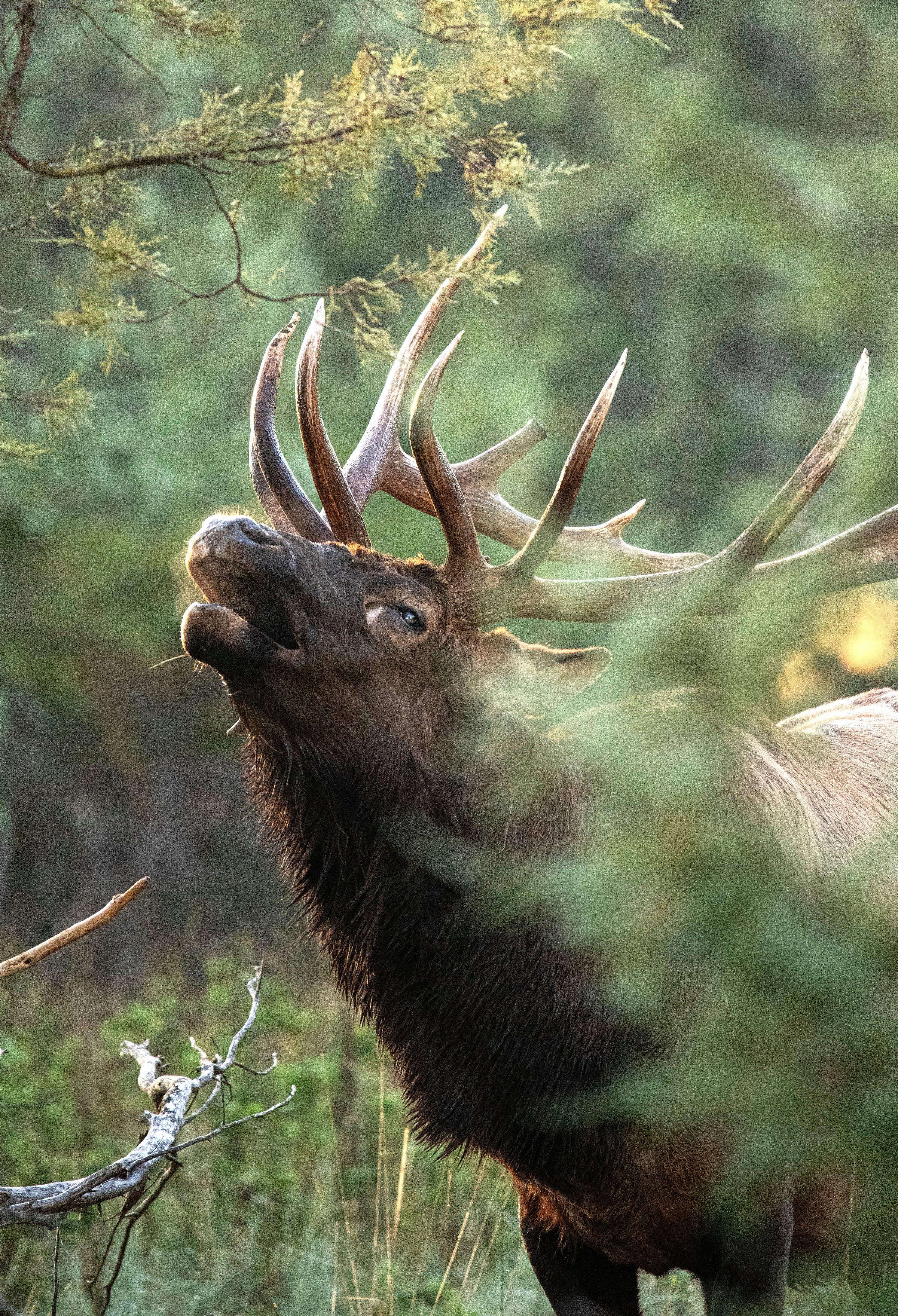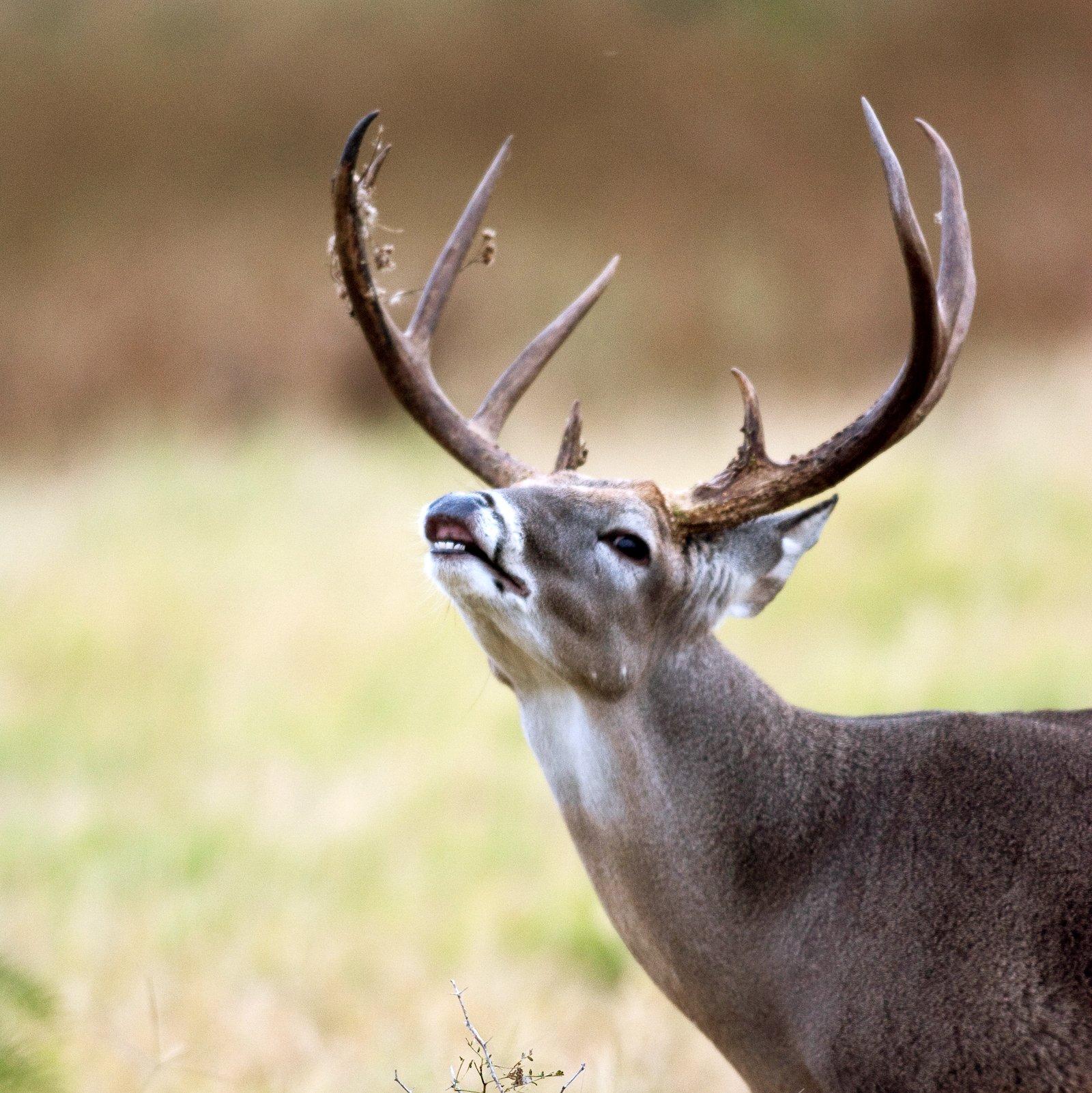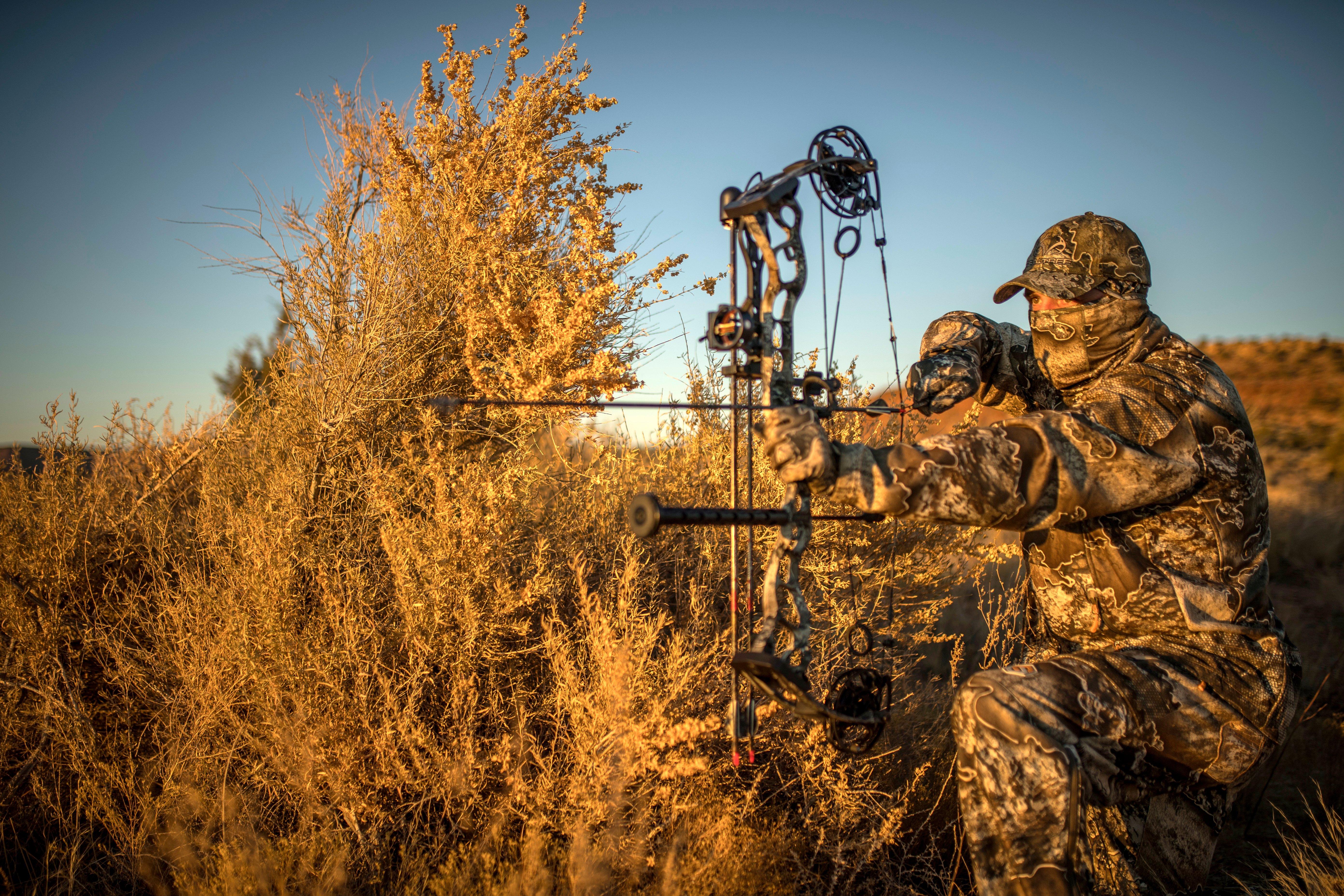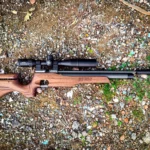
Hunters who don’t pay attention to thermals likely won’t experience as much success, especially when bowhunting. Image by Bill Konway
After a tedious climb, I crested the ridgetop as a bugle rang out 250 yards below me. Carefully, I negotiated down the slope, scanning for a large tan shape amidst the dense timber as I descended. Eventually, I put my eyes on a cow elk. Glassing a little bit more, I soon turned up a second cow. Finally, the bull appeared in my binoculars. He was bedded down, bugling occasionally. At about 100 yards away, I didn’t dare take another step because one of the cows was facing me. I nocked an arrow and held tight, waiting for the elk to stand and hopefully wander closer.
But it wasn’t meant to be. Suddenly, I felt air pull downward, and a commotion ensued as the bull and his cows instantly rumbled downhill. I’d been busted. Although the wind had been steady higher up the ridge where I’d originally heard the first bugle, the morning shadows shifted, instigating a swirl that betrayed me, pulling my scent straight downhill to the bedded elk. Welcome to the world of thermals.

Elk live longer lives thanks to strong thermals. Image by John Hafner
WHAT ARE THERMALS?
From my point of view and experience with thermals while hunting, I describe them like this: Thermals are air currents that rise as the earth warms after sunrise and drop as it cools after sunset and through to the early morning hours. However, I was interested in a more scientific explanation, so I spoke with friend and meteorologist Mike Breunling of central Wisconsin.
“Thermals are small-scale phenomena that meteorologists classify as localized effects,” he said. “They’re small currents of heated air produced above a surface that is warmer and more buoyant than its immediate surroundings. There’s no magic to thermals. It’s just a situation in which a given locale is favorable for differential heating — one part of the earth’s surface is heated more than the immediate surrounding areas, which puts a circulation in motion.”
Thermals can happen anywhere and anytime where the earth’s surface is heated in a very small area more than surrounding areas.
“The surface in this context could be a forest or flat ground on the prairie,” Breunling said. “It could be rock outcroppings in a more topographically diverse region. The heat essentially sets the air into motion. When the air is heated, it tends to rise. As well, other atmospheric factors can determine to what extent the air will rise when it’s heated.
“Cold air will start to flow off from where the thermal originated and pool toward the low-lying areas as surfaces of the earth cool back down. The intensity and amount of cool air is based on how long the thermal was in existence in that given locale. Other atmospheric conditions also play a role in this. For example, if there isn’t much ambient wind, the thermal circulation is going to rule the day. But, if there is a greater prevailing wind, it can tend to mitigate the thermal’s intensity and thereby diminish some of the localized cooling effects that the thermal might produce.”
Knowing this, you can anticipate that elevations higher than the thermal will be warmer and elevations lower than the thermal will be cooler. This can help you make some educated hunting plans, which we’ll discuss next.
Don’t Miss: ARE THE BIGGEST TYPICAL WHITETAILS HISTORY?

When possible, whitetails almost always use thermals to their benefit. Image by Russell Graves
THERMALS AND HUNTING PLANS
Although Breunling isn’t a hunter, his long meteorology career positions him to talk about how hunters might become more effective in the presence of thermals.
“Over time, the more one hunts in a specific environment — perhaps wooded, hilly or even mountainous terrain, for example — the better they will come to understand how thermals work in very specific locations,” he said. “You’ll begin to understand thermal circulations for each location and can make plans accordingly. There are all types of varying situations, so when you get to know the topography and surroundings, then it’s a matter of whether or not the overall atmospheric conditions are favorable to allow thermals to form and to what degree of intensity.”
You can typically count on some basics. If you’re hunting whitetails in a draw that connects a valley to a ridge top during late afternoon, you can anticipate thermals to cause an air circulation that floods down the draw toward the valley as the sun sets, taking your scent with it. When you’re at the top of a ridge at noon on a sunny day and want to approach a bugling bull elk on a bench below, the thermals will typically draw your scent uphill away from the elk — the exception being if a prevailing wind is overriding or mitigating the thermals.
One of the most effective ways to hunt elk or mule deer in mountainous topography is to approach along a sidehill at the same elevation as the animal. Whether the thermals are falling or rising, you should be in a safe zone approaching from the sidehill in most cases.
It’s risky to approach an animal on foot when the thermals are switching from falling to rising at sunrise or from rising to falling around sunset. If you use a wind checker at this time, you’ll notice the powder often swirls erratically. There are many inconsistencies as the shift occurs, and I’ve been busted by elk numerous times in these instances. You’re better off waiting for the thermals to fully stabilize before approaching.
Don’t Miss: IS THERE A WHITETAIL FOOD PLOT SILVER BULLET?

Deer, elk, and other big game animals are difficult to tag, especially if the thermals are in their favor. Image by Bill Konway
PUTTING IT ALL TOGETHER
Back up the mountain, I was chasing a herd bull that was being badgered by multiple satellite bulls. It was a magical morning when they just didn’t stop bugling. Managing the thermals as I shadowed the herd was difficult, but I monitored them closely with my wind checker.
Finally, at about noon, I slipped into a situation I knew would work. A bull was bugling at roughly my same level, and another bull bugled beneath me about 100 yards away. I worked in between the two bulls, knowing the heated landscape would keep the thermal circulation going uphill. I no more than nocked an arrow when the bull below me appeared and was walking directly at me.
I drew back when he was 50 yards out, and soon after, when he paused to assess the bowhunter standing 14 yards away, I shot him perfectly through the front of the chest. He ran a little more than 100 yards before going down. I’d waited for the thermals to be consistent and for the right opportunity to strike, and the good Lord blessed my plans.
Don’t Miss: 81 WAYS TO FAIL AT DEER HUNTING

When you understand thermals, it will be much easier to get within bow range of big game. Image by Bill Konway
CONCLUSION
If you haven’t paid much attention to thermals or just haven’t quite figured them out, you might be limiting your success and giving the animals you hunt an edge. For the most part, thermals can be predictable at certain times of day, especially given clear, sunny conditions, and a lack of wind. Of course, there are also times when they’re unpredictable, such as cloudy days or right at sunrise or sunset. But, the more you hunt in a given location, the more you’ll understand how they work in that spot and how to hunt more effectively around them.








































